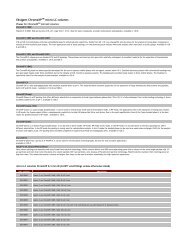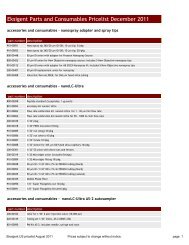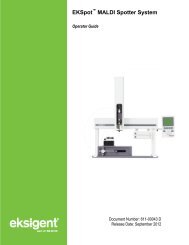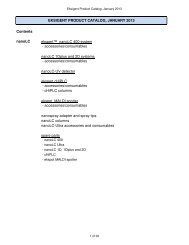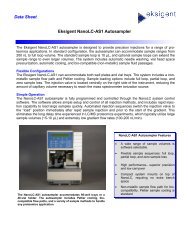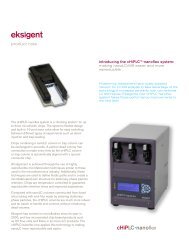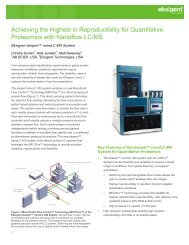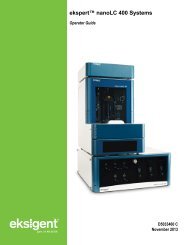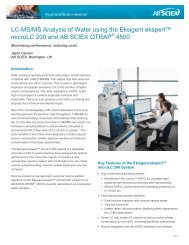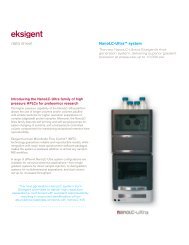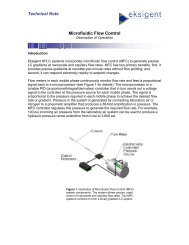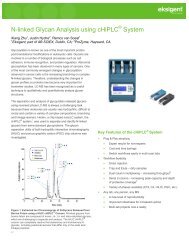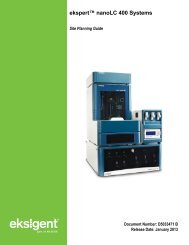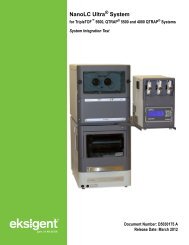NanoLC 1D Plus and 2D System Operator's Manual - Eksigent
NanoLC 1D Plus and 2D System Operator's Manual - Eksigent
NanoLC 1D Plus and 2D System Operator's Manual - Eksigent
- No tags were found...
You also want an ePaper? Increase the reach of your titles
YUMPU automatically turns print PDFs into web optimized ePapers that Google loves.
Quick-start Guide..516.3 General Troubleshooting GuidelinesTo avoid the possibility of electric shock, never disconnect an electrical assembly while power isapplied to the system. After turning power off, wait about ten seconds before disconnecting anassembly.To prevent injury, always observe good laboratory practices when you h<strong>and</strong>le solvents, changetubing, or operate the system. Know the physical <strong>and</strong> chemical properties of the solvents. Refer tothe Material Safety Data Sheets for the solvents in use.There are no user serviceable components or assemblies inside the nanoLC. Service or anyinternal parts or assemblies requires a Factory Qualified Service Technician.When troubleshooting the nanoLC system, follow these safety practices:The basic steps for nanoLC system troubleshooting are:step 1step 2Step back <strong>and</strong> look at the overall system. Is something obvious causing the problem? For example, isan instrument unplugged or improperly connected?Compare current system operation with the way the system operated before the problem started.Identify conditions (pressures, power settings, flow rates) that are different than they were when thesystem was operating normally.For example, if the output pressure is usually 500 psi with a certain method, is the system pressurecurrently in the same range, or drastically higher (possibly caused by a plug) or lower (possiblycaused by a leak)?step 3Identify in the order listed below the symptom that varies from normal system operation:• <strong>System</strong> power on <strong>and</strong> initialization (initialization fails)• <strong>System</strong> diagnostics (flow stability, controller tuning)• Flow rate in each channel (high, low, erratic)• Output pressure (high, low, erratic)step 4step 5For each isolated symptom, identify a list of possible causes using the troubleshooting checklist below.The troubleshooting in section 6.5 allows you to narrow down the possible causes of a symptom<strong>and</strong> find suggested corrective actions.If this process does not correct the problem, contact <strong>Eksigent</strong> Technologies Technical Support.nanoLC Operator’s <strong>Manual</strong> 611-00012 Revision A1



